„The future on your side”
Learn more about the joint exhibition project of the Liebermann Villa and the Klasse Streuli, Faculty of Fine Arts at the University of the Arts Berlin. Please scroll down for the English wall texts.
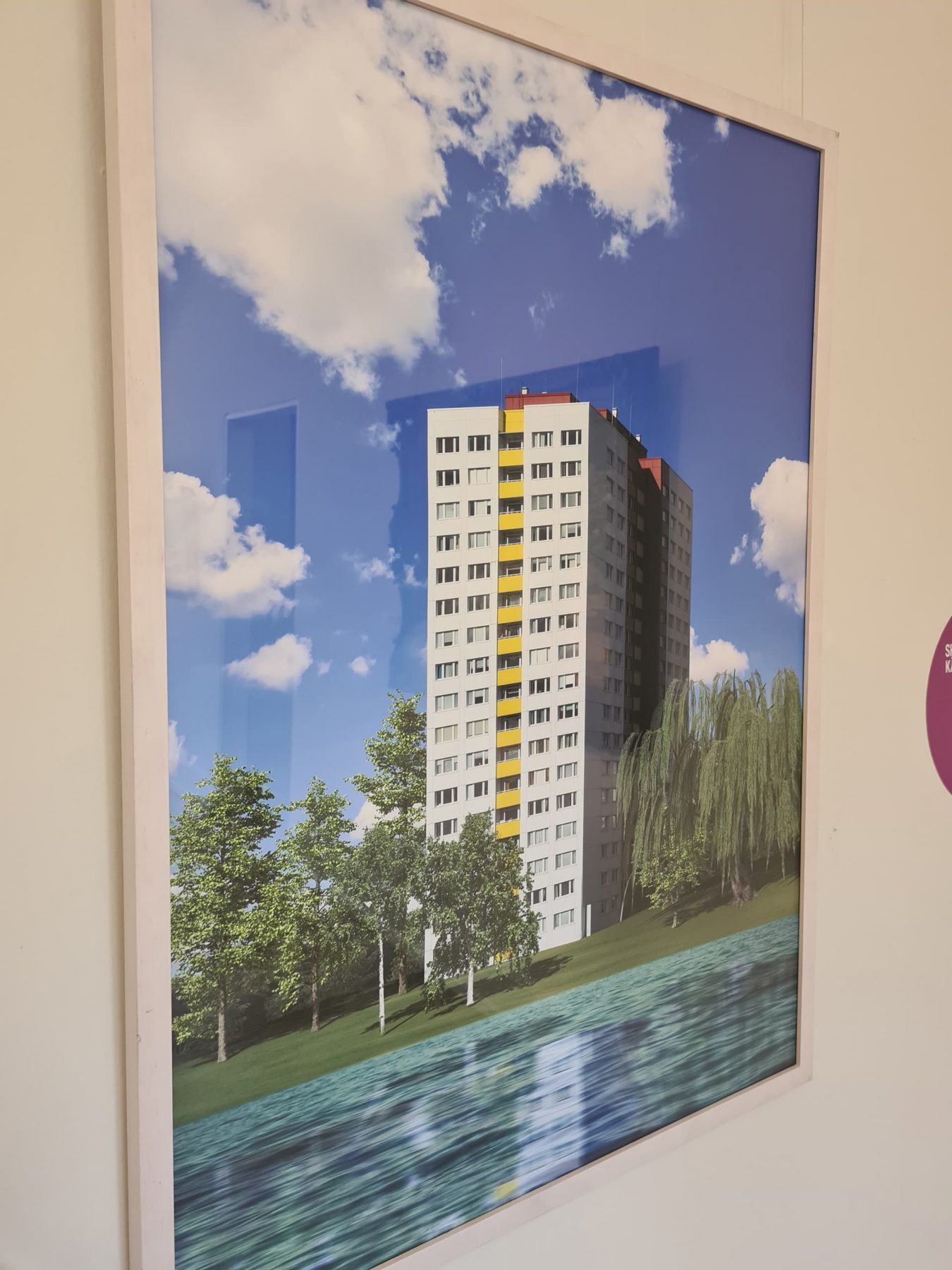
Shirin Käfer
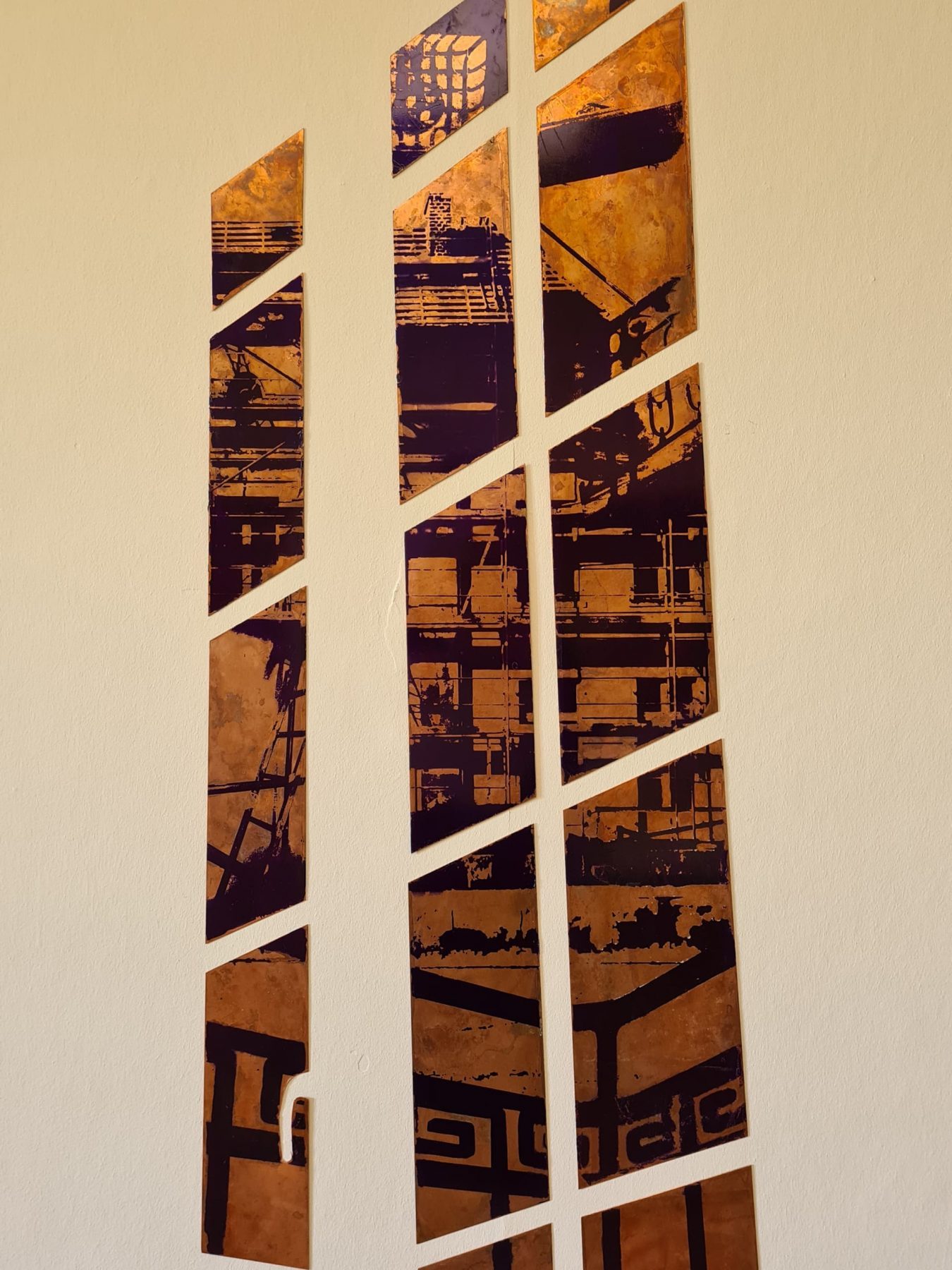
Alma Lucia Balmes
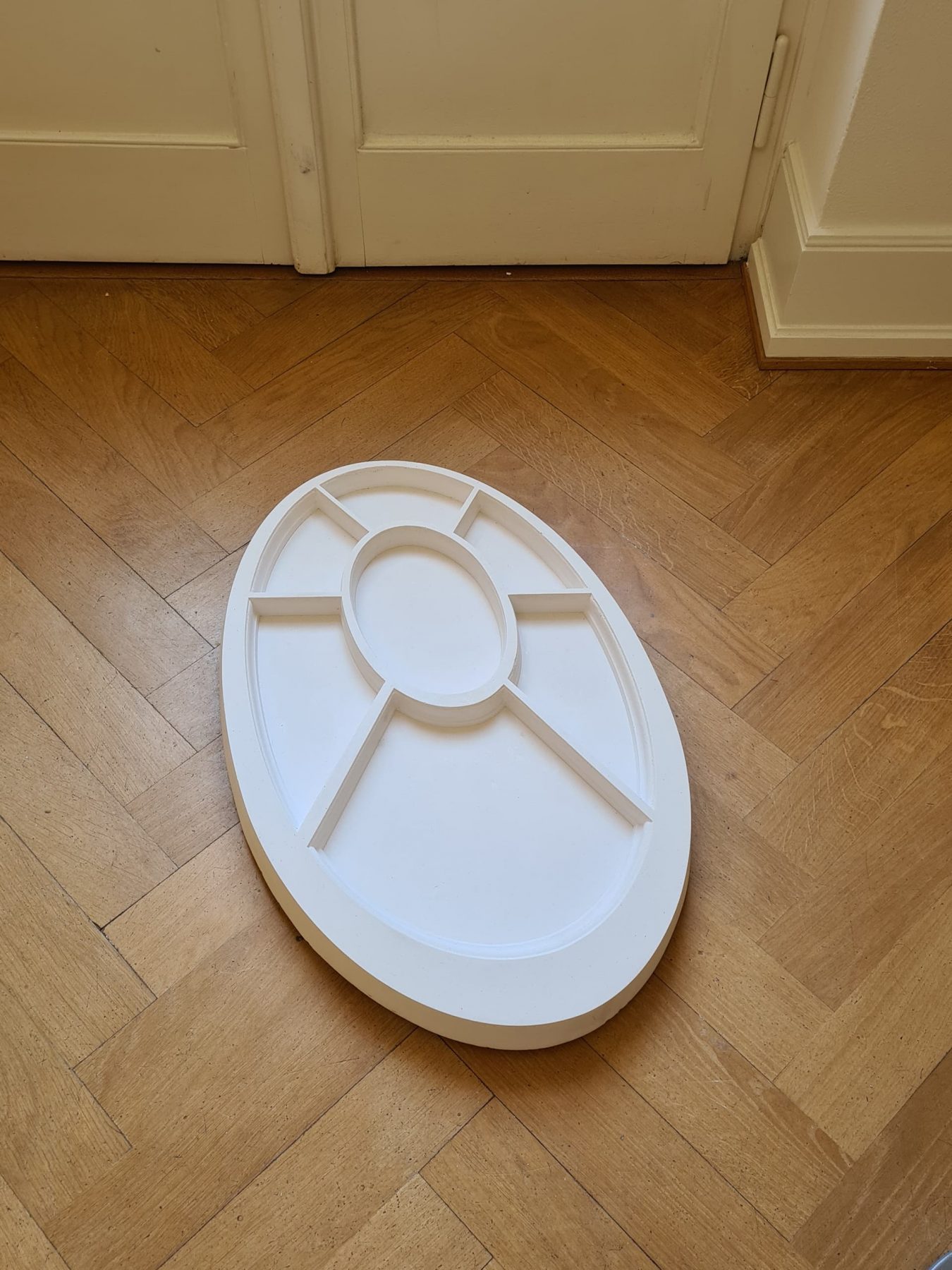
Max Liebstein
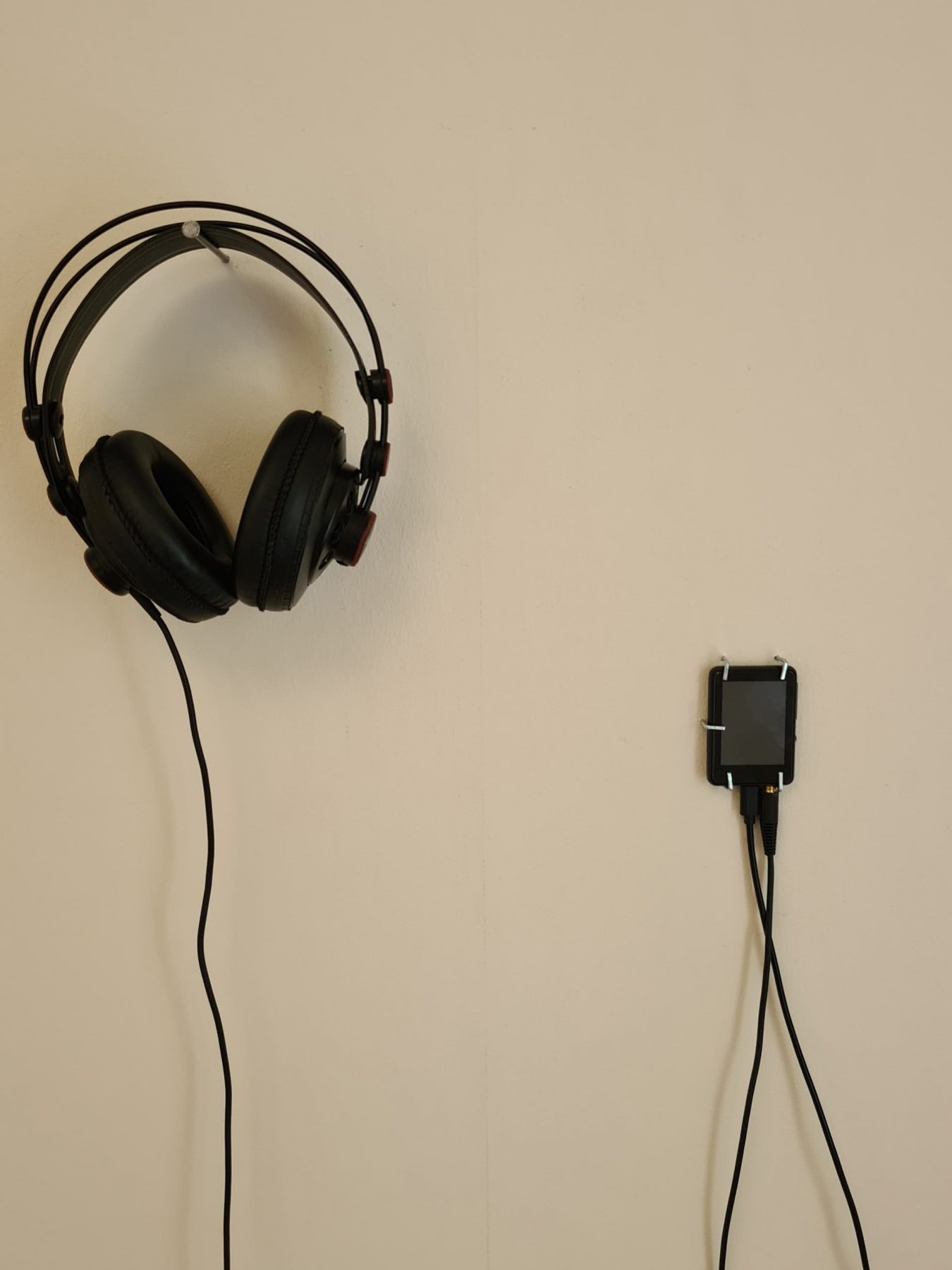
Annmagrit Möller
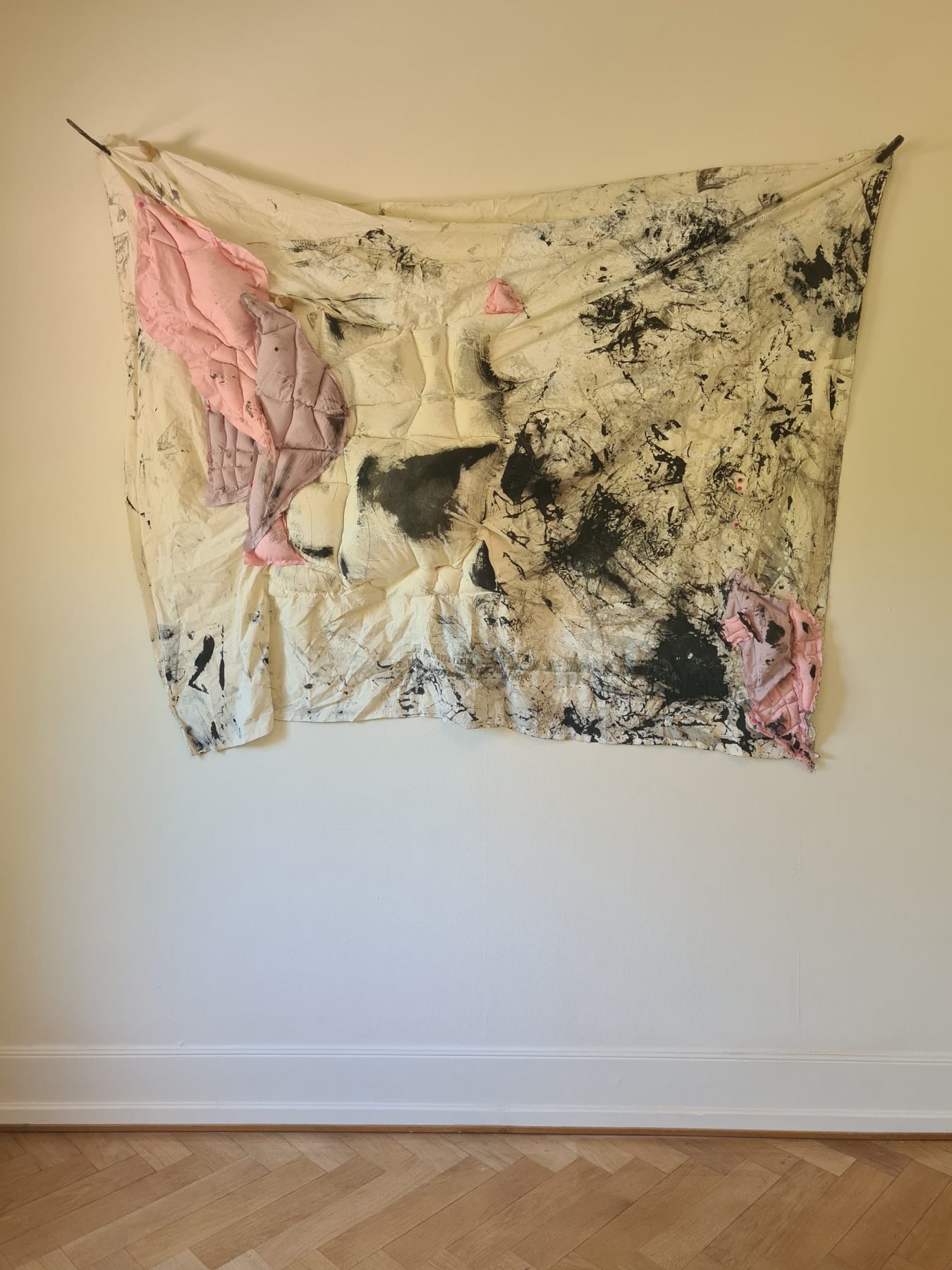
Emma Zimmermann

Konrad Friedländer
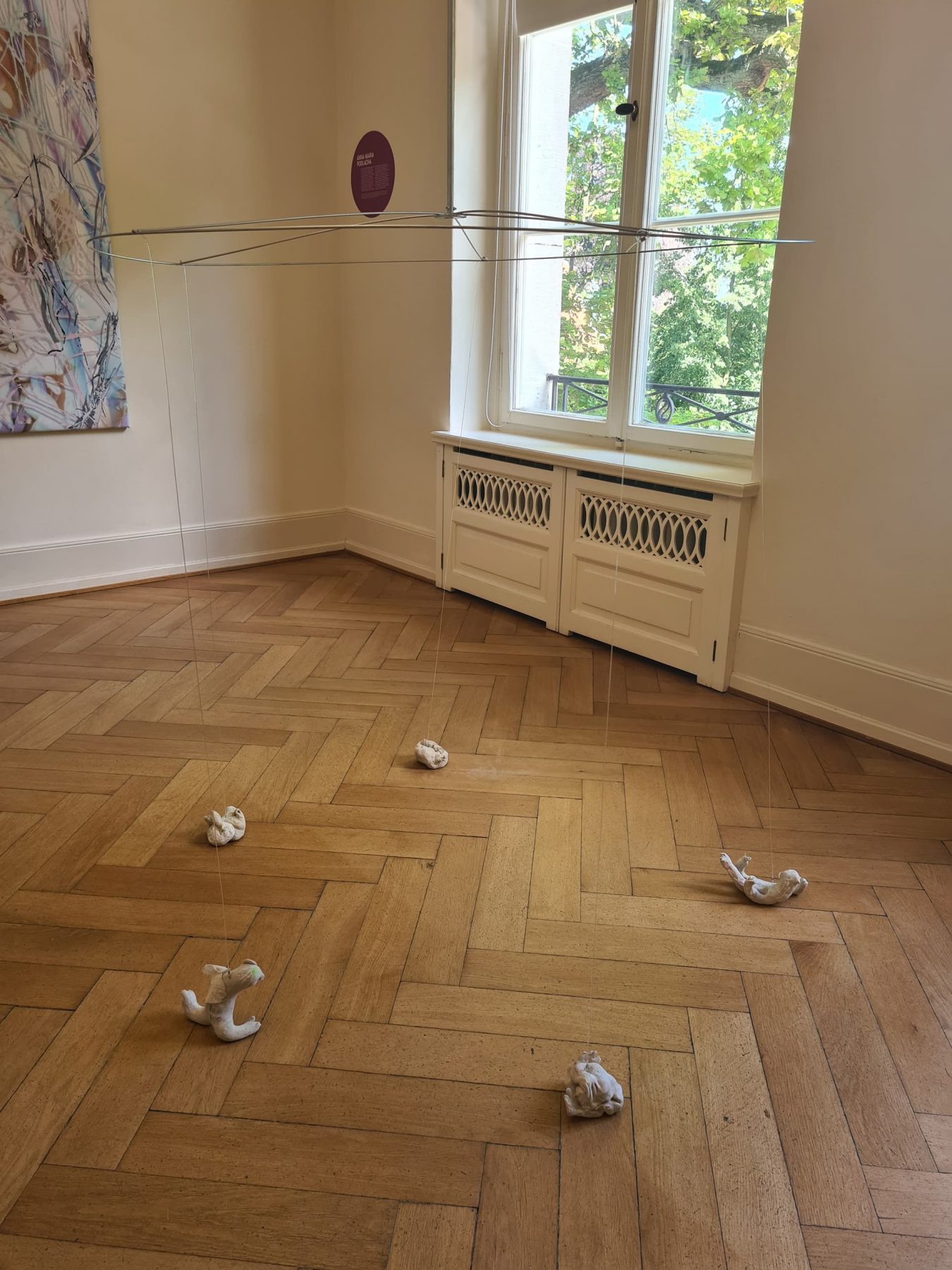
Terme Alavi

Anna-Maria Podlacha
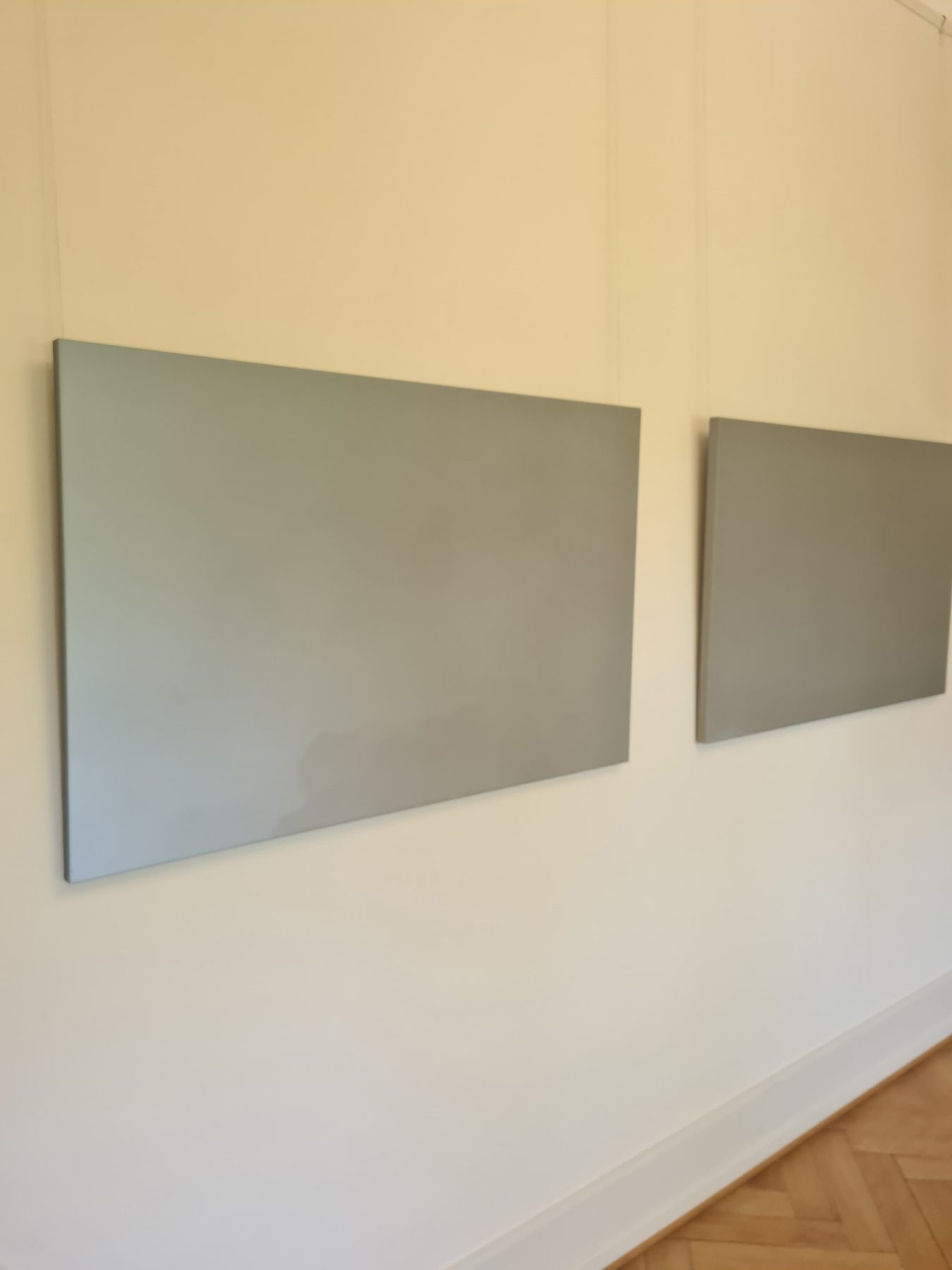
Sina Link
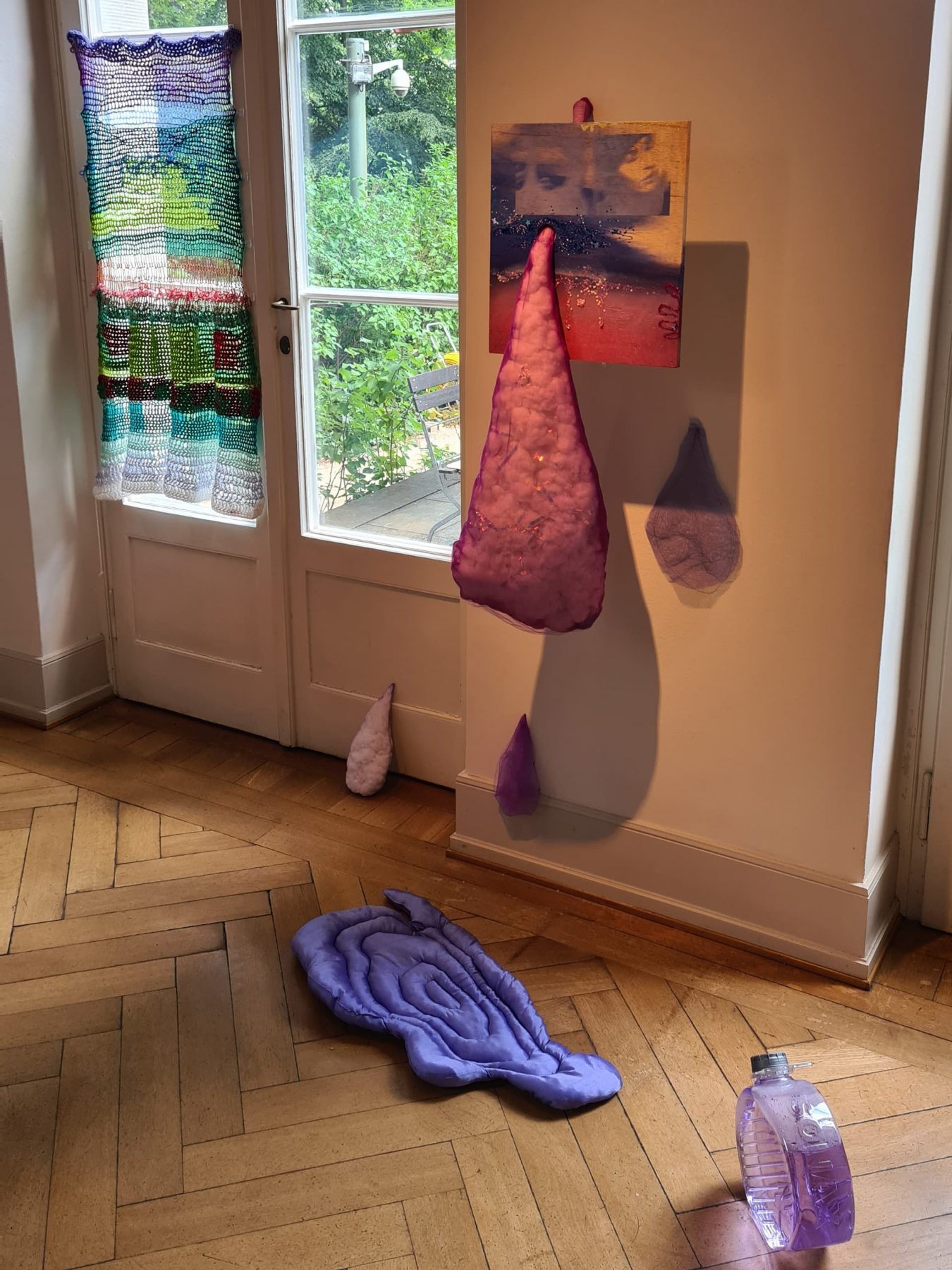
Leo Rhian

Jana Convent
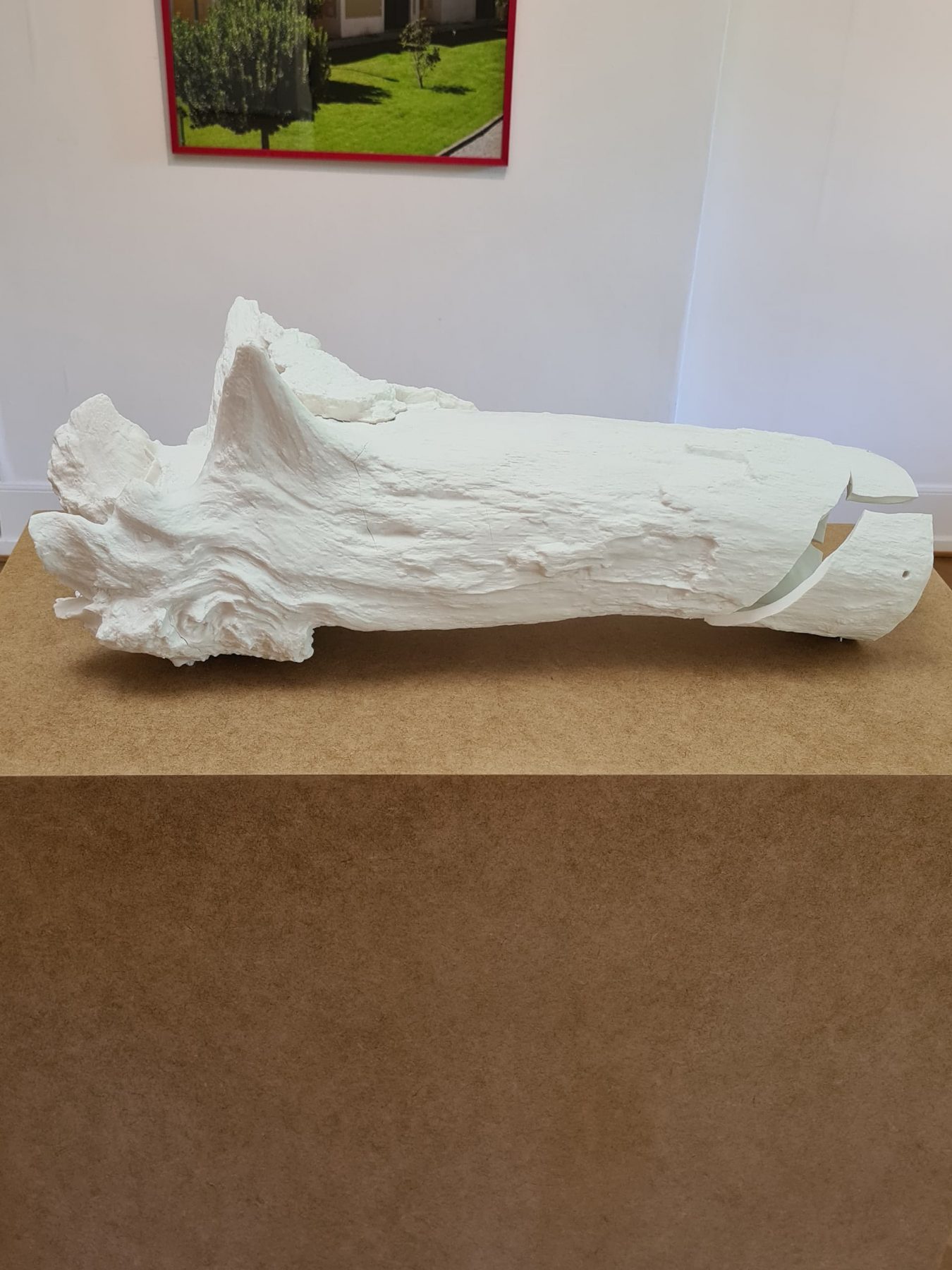
Marie Salcedo Horn
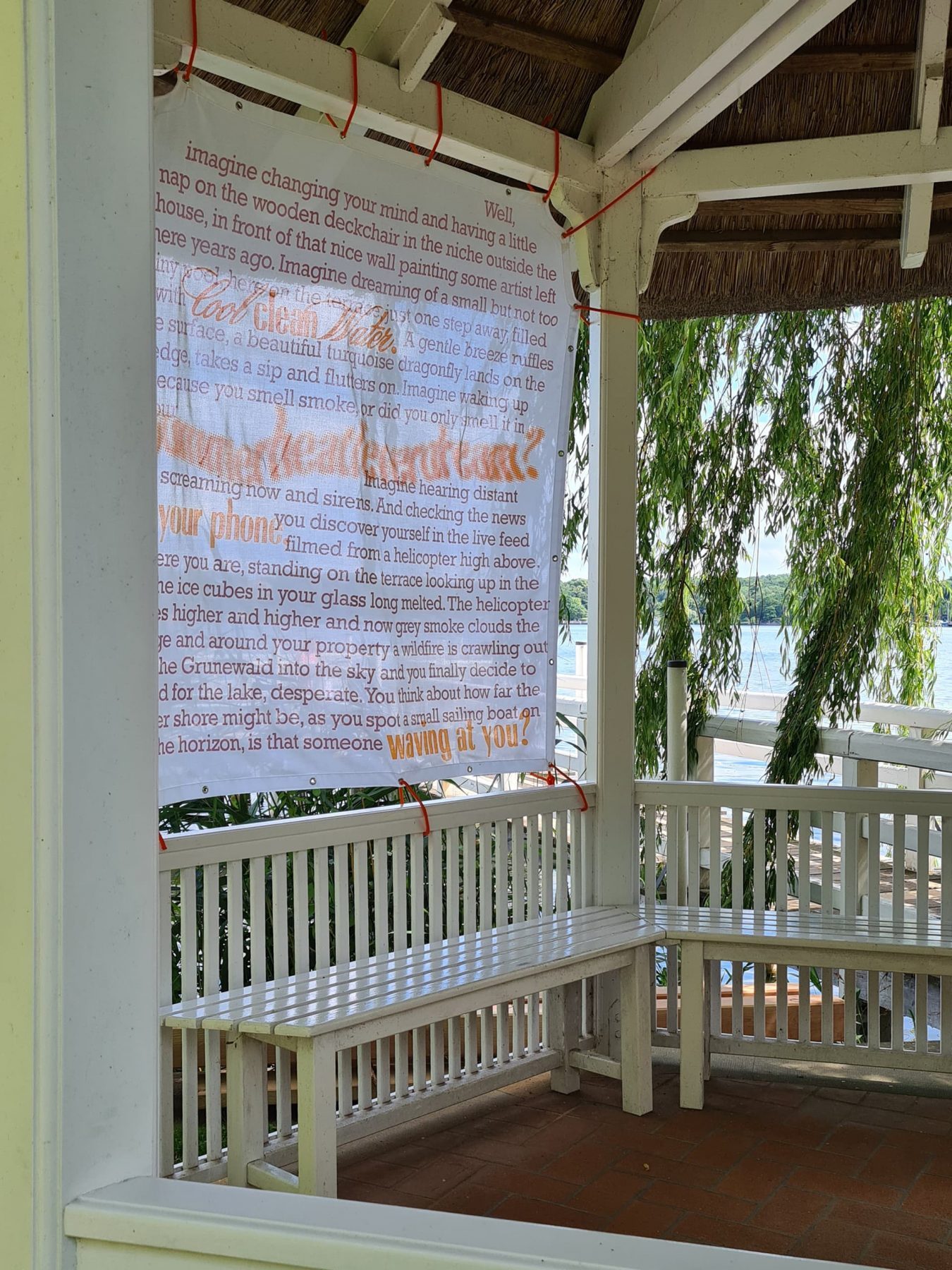
Friederike Goebbels
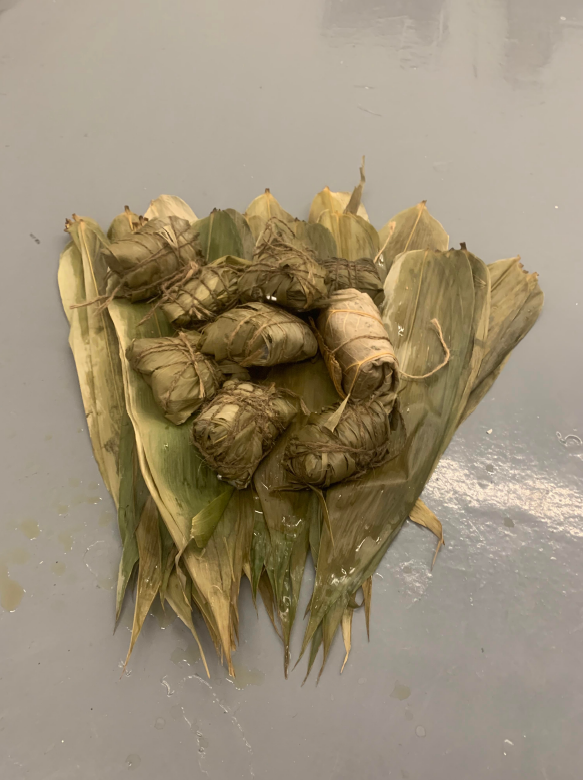
Mengna Tan

Elena Dorn
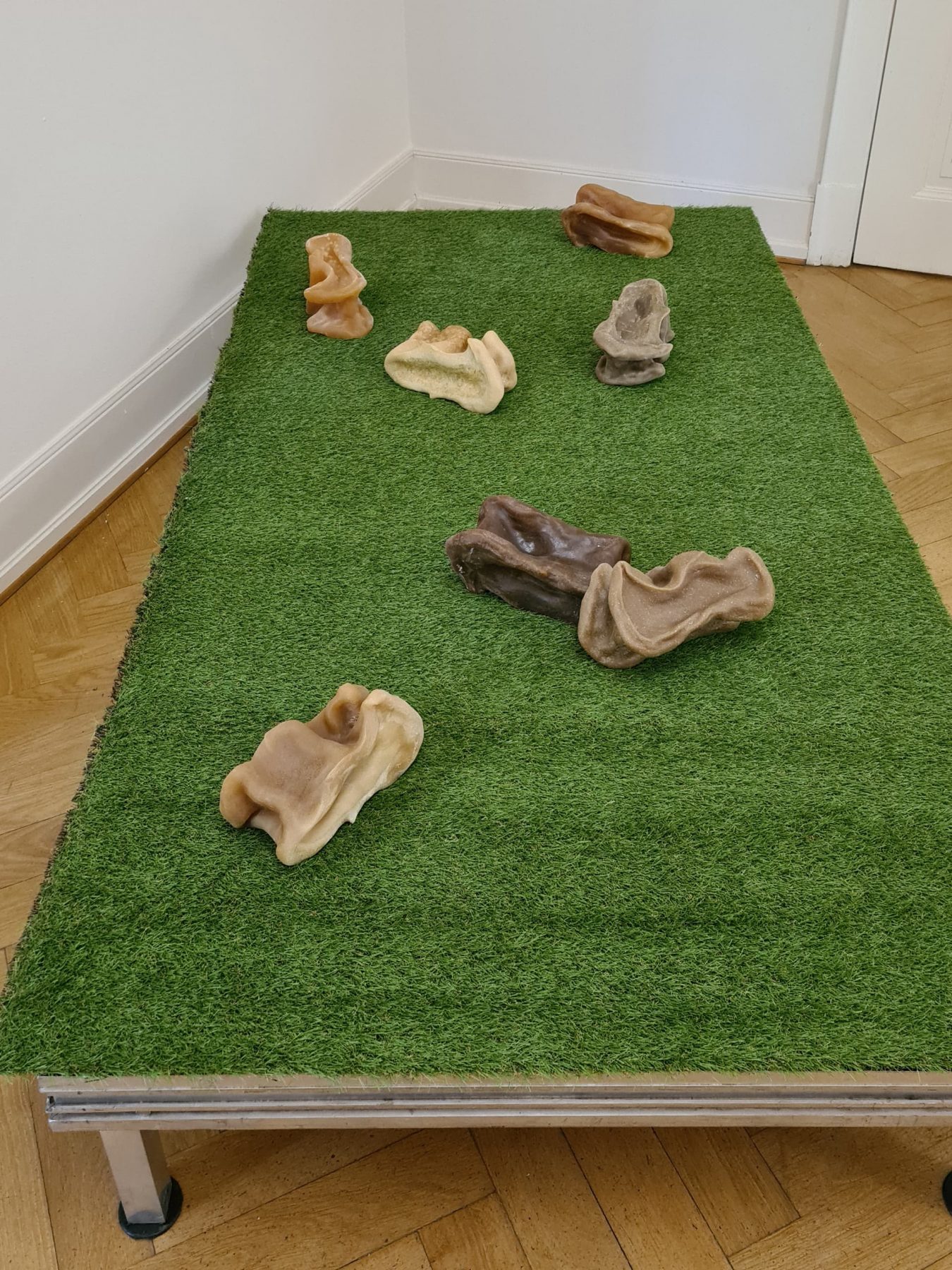
Alungoo Xatan
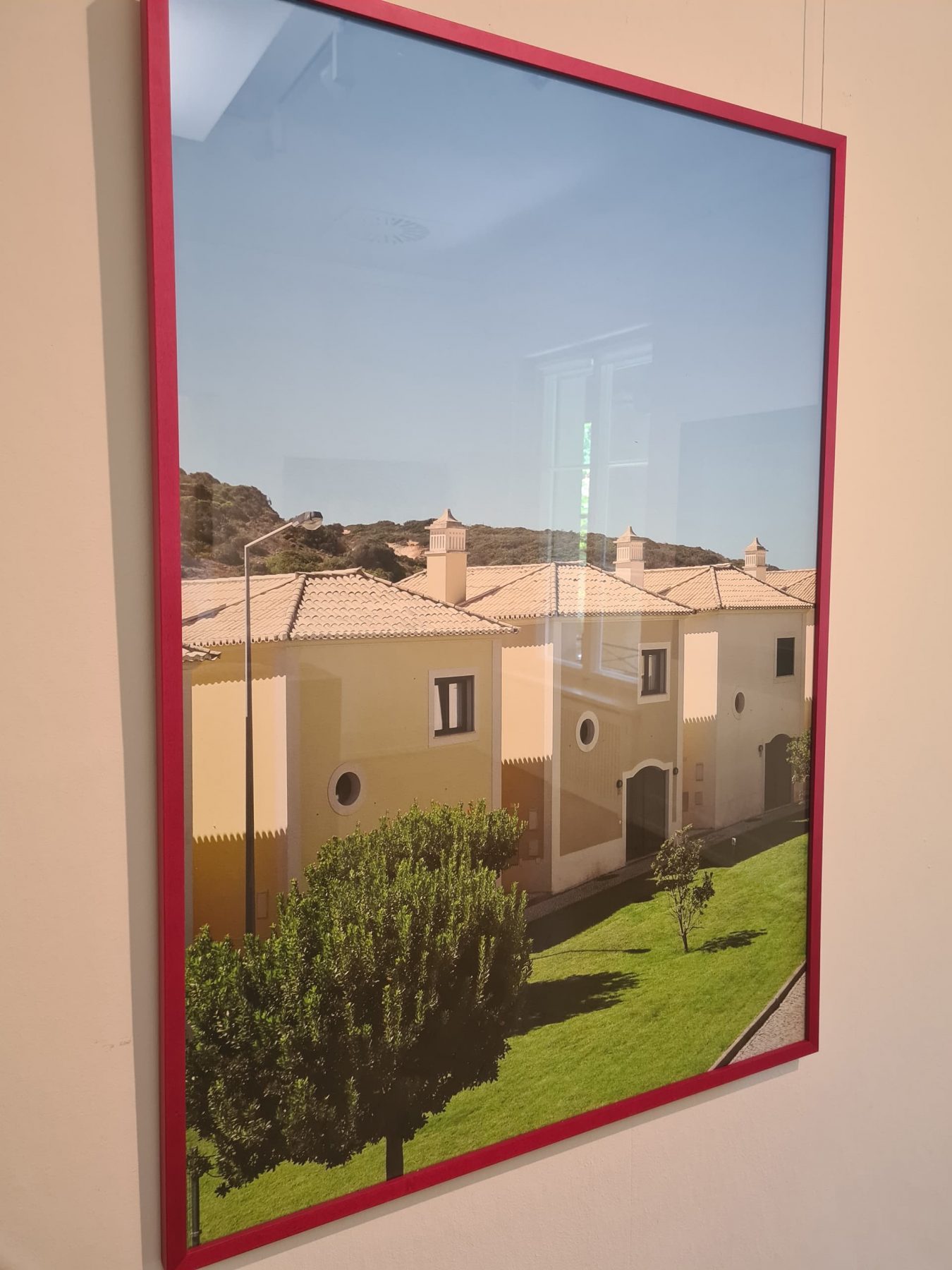
Joana Heitzer
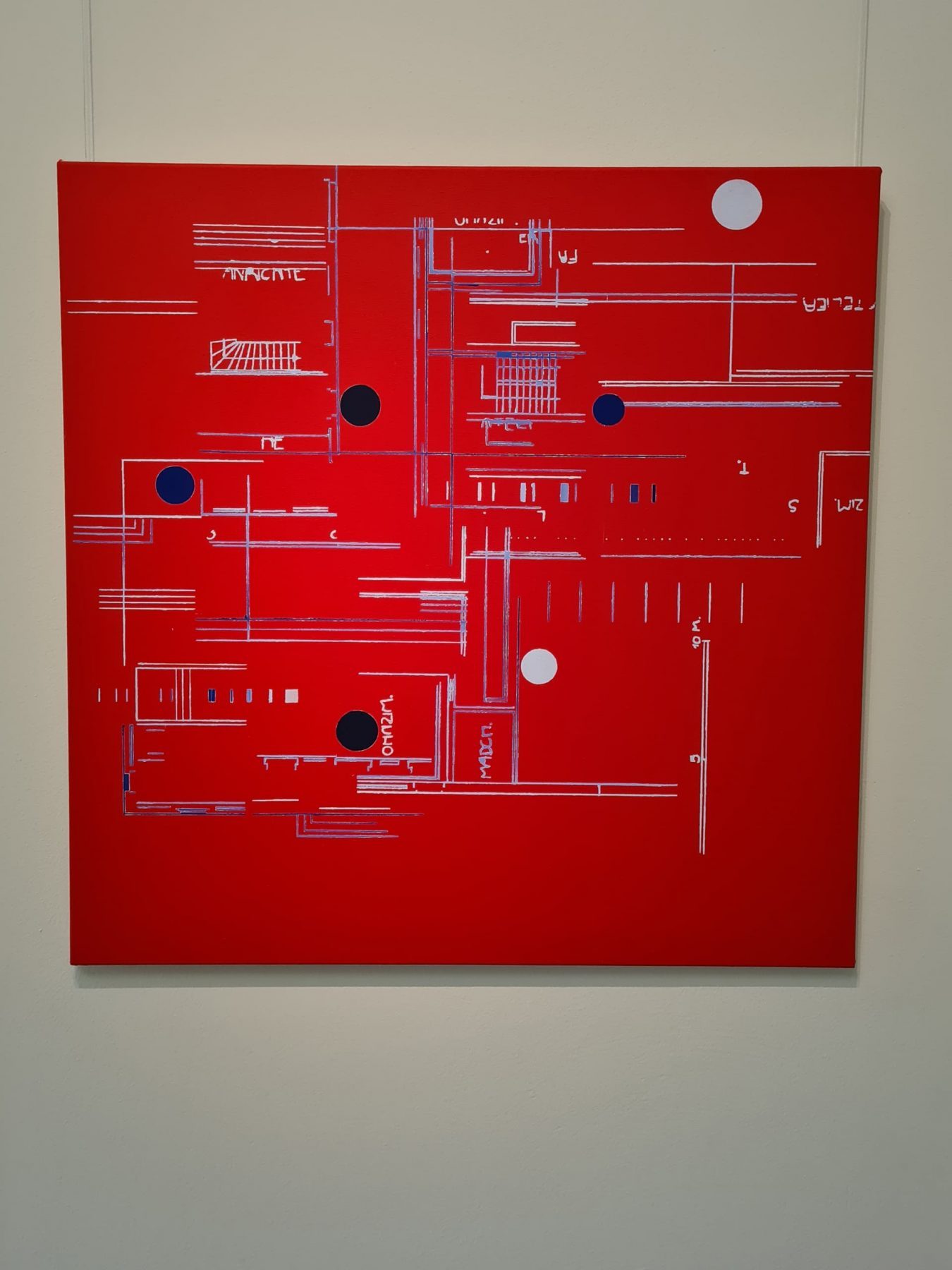
Eleni Manolopoulos
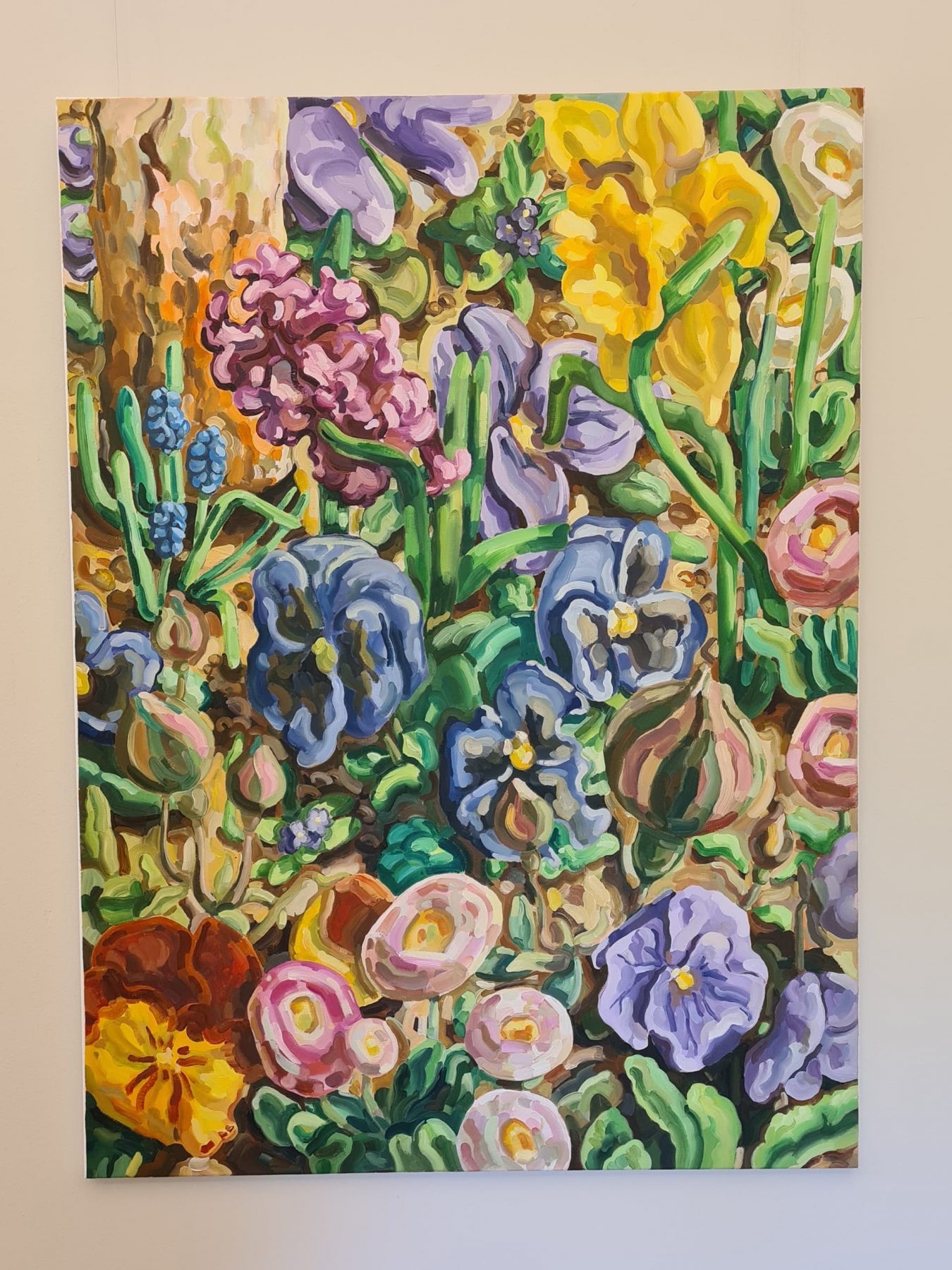
Sarah Lee
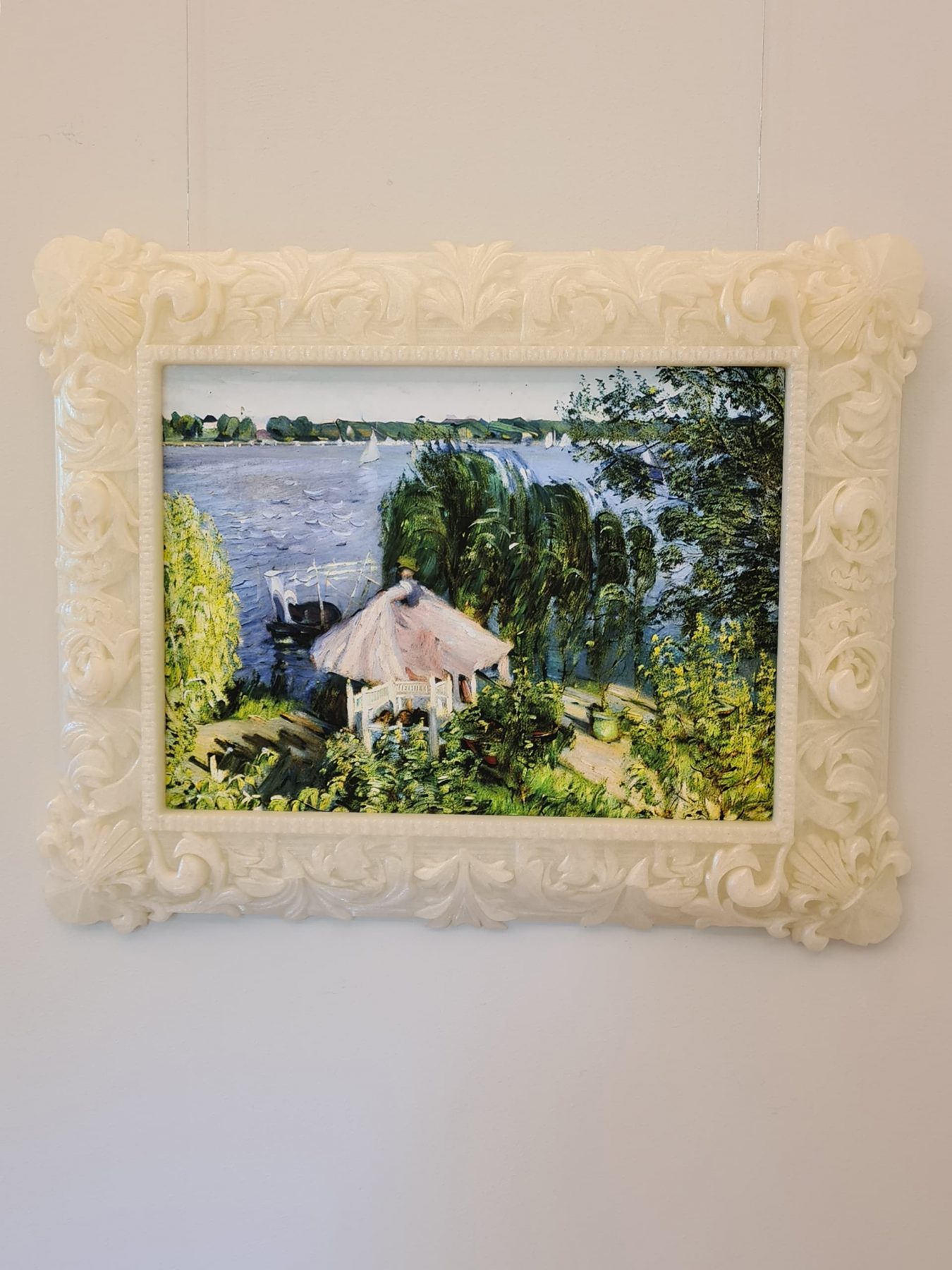
Caroline Steinke
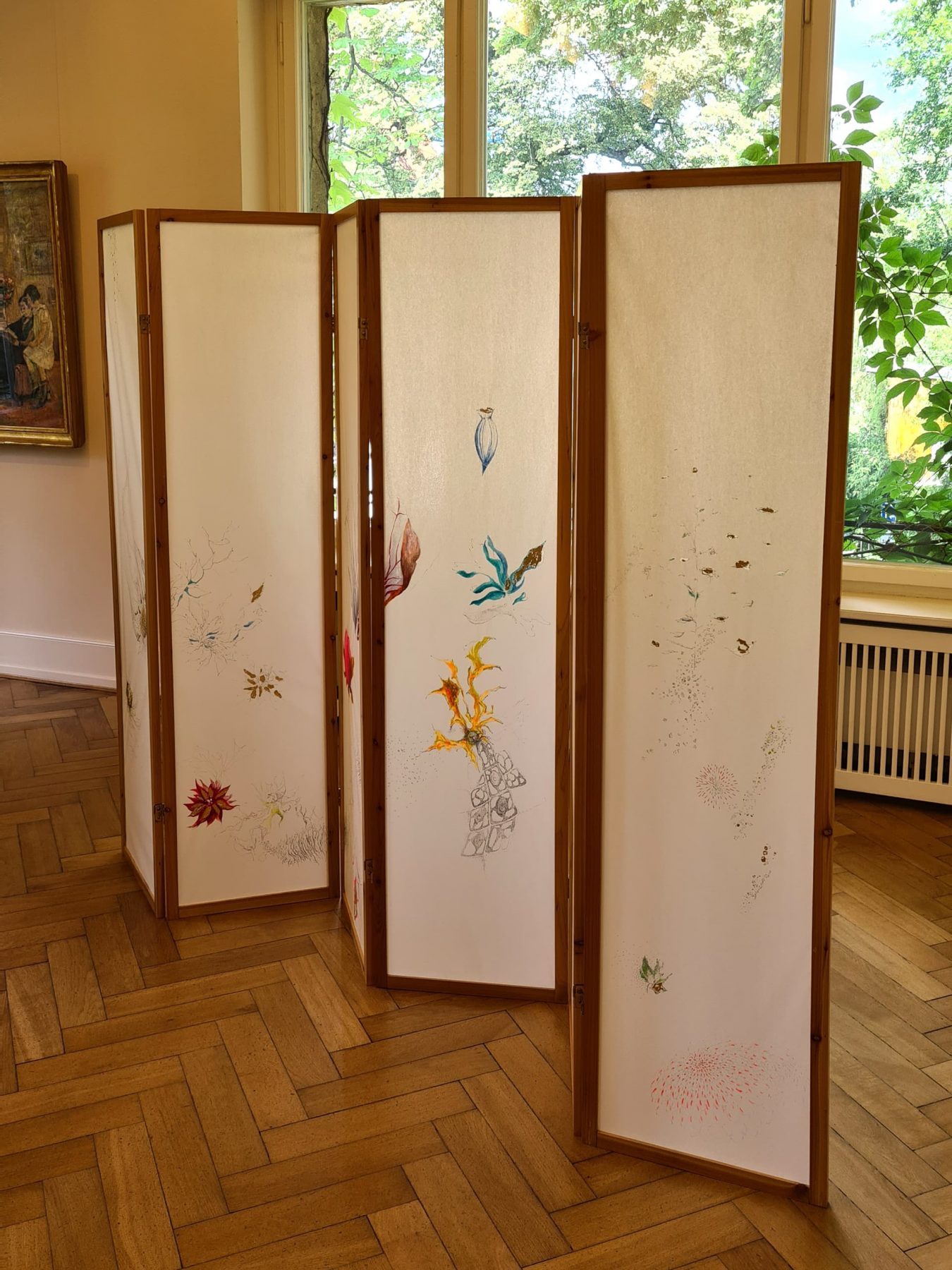
Teja Häuser
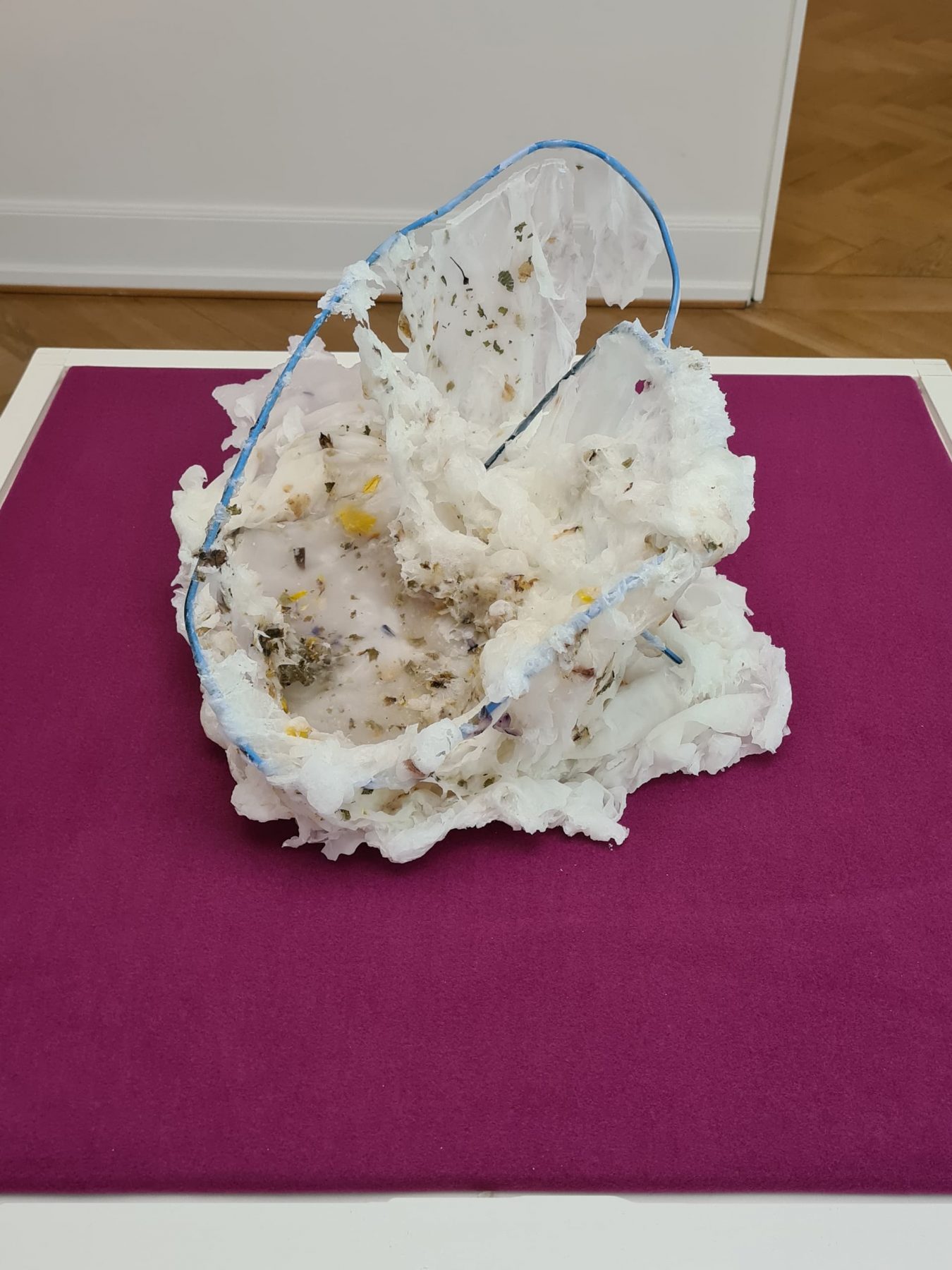
Jasmin Sarah Rongelraths
ENGLISH WALL TEXTS
INTRODUCTION
“Whoever has the youth on his side has the future on his side, and that alone is what counts”.
These were the words of Max Liebermann (1847-1935) in 1905. Following his example, in the summer of 2023 we have invited art students from the Berlin University of the Arts to join us in the Liebermann Villa. Liebermann supported young art throughout his life. Inspired by Liebermann and his art, his family history and the history of the location, 23 students now present their artworks in the interiors and garden of the Liebermann Villa. The exhibited artists all study with Prof. Christine Streuli in the Faculty of Fine Arts at the University of the Arts Berlin (“UdK”).
The idea of renewal in art, as well as the associated support of young artists, was of central importance to Max Liebermann. He invited young talents to his home to work in his studio; wrote recommendations to critics and museum directors; provided assessments of works and organised national and international exhibition opportunities for his young colleagues. The opinions of younger generations were also of paramount importance to the artist. And so for our museum: how do Liebermann and his story affect the art students of today?
The class of the UdK lead us through the exhibition rooms, the ground floor of the villa and the Wannsee garden with their works. In a range of media, they explore the multi-layered history of this place and at the same time pose questions relevant for today. Here on the upper floor of the villa, the young positions are presented with Liebermann paintings; elsewhere, the works enter into dialogue with the architecture, the garden and nature. The students have each written short wall texts for their works. You can listen to a conversation between the participating artists via the audio guide.
This exhibition is staged in cooperation with the Berlin University of the Arts. Our sincere thanks go to the class, to Prof. Christine Streuli and Kathrin Köster for the collaboration and support.
TERME ALAVI
This work is entitled “Looloo will eat you. Or won’t it?”. The looloo is an imaginary creature in Iran that parents use to try to educate their children. The phenomenon of the looloo can be transferred to all cultures, known in English, for example, as the bogeyman. The looloo is always behind you. If you turn around to see the looloo, it will devour you at that moment. The looloo is stable and never falls over. It pushes you steadily. By concentrating on the circular movement, you briefly forget your own looloo; you can enjoy this moment, just observe and leave your own problems behind. The work is based on the film “They Shoot Horses, Don’t They ?” (1969, directed by Sydney Pollack). The film is about a dance marathon that drags on and on and the participants gradually drop out or die.
Terme Alavi (*1995 in Tehran) earned a diploma in graphic arts and a bachelor’s degree in painting in Iran. She has been studying fine arts at the UdK Berlin since 2020.
ALMA LUCIA BALMES AND MAX LIEBSTEIN
This work is entitled “Blind Window”. 14 rectangular copper plates reproduce the shape of a high studio window of the UdK building in Hardenbergstraße. The copper plates, covered with a purple foil and exposed to photographs of scaffolding, shimmer with a reddish colour. The printing plates themselves are on display. The view out of the window is blocked; thus the viewers are challenged to question their own perception of the outside world. The installation can be understood as a metaphor for German history. Late in life, Max Liebermann witnessed the anti-Semitic marches through the windows of his prominent palace on Pariser Platz. First the windows became blind during this time, then the world.
Alma Lucia Balmes (*1991 in Winterthur) is studying fine arts at the UdK Berlin with stays at Listaháskóli Ìslands Reykjavíkur in Reykjavik and the Pratt Institute of Photography in New York. She is interested in the diaphanous character of images, which act like a membrane between inside and outside. For more information on the biography of the artist Max Liebstein, see the wall text close by.
JANA CONVENT
This video is an attempt. An attempt to get to the bottom of past moments and to enter into an exchange with an archive of images. What does a juxtaposition with photography do to the moving image? Photography as a temporal marker, a frozen moment, can be understood as a confrontation with the past, with something that is no longer alive. The moving image, on the other hand, constantly confronts us with the past. And yet it pretends to us that something still seems alive through movement. The task is to develop a form for memory. Thus, the illusion here is to offer consolation for what is no longer. The myth that remains between the worlds. A rift. The familiarity of things can no longer be verified. It is a shift between realities.
Jana Convent (*1996 in Krefeld) studies Fine Arts at the UdK Berlin with a minor in philosophy. In her work, she constantly deals with what she finds, captures this in the photographic image and transforms it in such a way that it is torn out of its natural context and subjected to a new order.
ELENA DORN
Advancement, social. Change in a person’s membership of a social class, higher income group or qualification level, associated with higher social status. Convenience. Makes life easier, is pleasant; can describe laziness, associated with a comfortable situation.
Dynamics. Study of the influence of forces on the movement processes of bodies; force directed towards change, development, motive force.
Habitus. Overall appearance of a person in terms of appearance and behaviour; appearance, attitude, behaviour and demeanour.
Class society. A society that is categorised into different classes; these are characterised by social inequalities.
Elena Dorn (*1990 in Aschaffenburg) studied Theatre, Film and Media Studies in Frankfurt am Main and Prague. She has been studying at the UdK Berlin since 2017. She is interested in an aestheticisation of the banal, plays with memory that does not have to be her own and thus creates works with a staged narrative. She works with photography, drawing, painting and ceramics. Most recently, she exhibited at the Pavillon at the Volksbühne am Rosa-Luxemburg-Platz and the Kunsthaus Dahlem in Berlin.
MAX KONRAD FRIEDLÄNDER
Max Konrad Friedländer has been teaching himself the medium of photography since he was 15. He explores photography through analogue as well as digital image processing. The centre of his artistic work is his environment. The focus is on personal relationships. The following terms form the basis for his work: ground, frame, perspective, view, reference, subject and object. The examination and formulation of his artistic attitude set the starting point for his latest works.
Max Konrad Friedländer (*1990 in Dresden) began studying Fine Arts at the UdK Berlin in 2018. These sentences form the framework for his artistic work entitled “Window”: It must be possible to recycle the material used; There are no further changes during the production process; The object that is created can serve as the basis for new sentences and considerations; The perspective represented in the image must be clear; The work should factually and soberly depict what is seen; The viewer’s vision must be stimulated; Pleasure does not have to be found in the work; The work does not have to be understood; The work can exist more than once. These sentences are not artistic work.
FRIEDERIKE GOEBBELS
Tea houses were conceived as places of conviviality and exchange: Protected from environmental influences such as rain or sun, unmolested by nature. The text panels in the tea pavilion invite you to pause in the summer heat and immerse yourself in reading. This work is entitled “SPF 300”. It takes a look into the near future and touches on topics such as climate change, the human need for retreat, the importance of art and creativity as a refuge. She also names the challenge of dealing with a changed environment and the privilege of feeling safe. Wait and see – this is absurd to the point of dangerous today, yet it seems to be the widespread human strategy. The work continues this ignorant use of resources to the point where we can no longer control nature.
Friederike Goebbels (*1987 in Berlin) has been studying at the UdK Berlin since 2017 and has been supported by the Deutschlandstipendium since 2019. Last year, she won the Walter Stöhrer Prize for Graphic Arts. In her works, she combines screen printing, text, video and image to create ambiguous installations that are characterised by subtle details and precision craftsmanship. They address the ecological crisis, state surveillance or social structures and their effects on an everyday level.
SOFIA HATAULLINA
The sculpture exhibited here is an ode to life itself. It was created with a view to the early Christian doctrine of nature of the “Physiologus”. This says that a shellfish called the purple mussel lives in the sea. It rises from the bottom of the sea and drinks the dew of the sky and the rays of the sun, the light of the moon and the stars, thus creating a precious pearl. The object on display reminds us of the value of life in its vulnerability and fragility. The innocence of the baby involuntarily awakens the desire to protect it. The shell embraces the child and offers it a place of security. The work was created on the basis of the constant news of horror, of assaults and kidnappings and the humane suffering during the Russian-Ukrainian war. As a symbol of life and its finiteness, the sculpture is intended to provoke reflection.
Sofia Hataullina (*2002 in Chernihiv) studied classical sculpture at the Academy of Fine Arts in Kyiv. After the outbreak of the Russian war of aggression on Ukraine, she fled to Berlin. Now she is looking for a new visual language that allows her to express her ideas ironically.
TEJA HÄUSER
“Even more than in what he paints, the artist’s imagination shows itself in what he does not paint”. The work entitled “Loving Look” was developed on the basis of this Liebermann quote from 1916. The work deals with Liebermann’s searching gaze, which scans the surfaces of the visible with critical observation and respectfully shows their essence in his painting without revealing it. The artist is particularly interested in the dialectic in Liebermann’s work: the impasto application of paint and the lightness of gesture; the painstakingly masterful elaboration to capture a moment. Liebermann captures a moment that does not exist. With the dazzling sun spots that spring from his imagination, he illuminates the gloomy parts of his paintings. Again and again Liebermann shows himself without revealing himself, remains behind the protection of painting, of fantasy. He was painting flowers when the National Socialists seized power. And it is precisely the flower paintings that, after his family’s experienced despair of humiliation and death, make his work blossom again, very real in his garden at Wannsee.
Teja Häuser studies Fine Arts at the UdK Berlin and German Studies at the Freie Universität Berlin. She previously completed a Bachelor’s degree in Communication Design and a Master’s degree in Editing Science.
JOANA HEITZER
The concerns are not unjustified: Since studies began, the situation is not rosy. Only one shower is in operation per beach, the Azores high pressure area has increased dramatically in the last century. Street cleaning with drinking water remains prohibited and there is a consumption limit for private households. Depending on the soil conditions and on aspects such as the location of the area or the prevailing climatic conditions, a lawn needs up to 30 litres of water per square metre per week. Observations show that the abnormally large Azores high brings an average of 33 percent less winter rain to the west coast of the Iberian Peninsula. This work is entitled “Costas Ibéricas”.
Joana Heitzer (*1996 in Allgäu) has been studying Fine Arts and English Studies at the UdK Berlin and the Humboldt-Universität zu Berlin since 2015. She has presented her work in group exhibitions such as Kunstverein KunstHaus Potsdam e. V. and Künstlerhaus Bethanien. Her artistic work is largely photographic and graphic. Her works read as documents of her own observations, especially outdoors: alongside impressive geometries and late capitalist ironies, also the classic holiday motif.
SHIRIN KÄFER
This work is entitled “Everyone can make it, but not everyone”. It deals with the impact of the housing situation on the reality of people’s lives in Berlin. In the photographs, the view of the Liebermann villa over the idyllic Lake Wannsee and the view of a WHH GT 18 type high-rise in Berlin-Mitte are juxtaposed. With the help of digital superimposition, an image is created that emphasises these contrasts. The Liebermann property, which appears picturesque, stands in opposition to the reurbanisation and gentrification of the big city. The dynamics have resulted in a profound structural change of metropolitan residential areas. How do buildings and living situations influence the quality of life? Who is privileged and can choose their view? The Liebermann family’s country house on Wannsee was forcibly sold in 1940. Liebermann’s small cosmos, which has been restored today, serves as a projection surface for social housing issues and encourages an exchange of personal housing experiences.
Shirin Käfer (*1995 in Düsseldorf) studied art at the University of Essen. A subsequent residency at the AADK art residency and the Projekteria gallery in Spain shaped her preference for collaborative work. She draws particular inspiration for her work from the absurdity of life, but found objects, pop cultural phenomena and aesthetic everyday experiences also influence her works. She processes her observations in photography and video.
SARAH LEE
In this work, the artist engages with the garden of the Liebermann Villa. She enters into dialogue with nature and feels the exploration of the garden as a combination of silence and tension. The broken geometry of the birch trees attracts her attention. How do the elements relate to each other? In deliberate movements, plants stretch towards the sun, they crawl, dance, communicate with each other and with the viewers. In order to capture the qualities and tensions visually, the representation is done on a large-format canvas. Here, idealised scenes and strong colour contrasts create impressions. They explore a relationship between natural growth as well as decay in nature and evoke associations of balance and strength.
Sarah Lee (*2001 in Berlin) has been studying at the UdK Berlin since 2020. She is primarily interested in painting, with the focus of her artistic work being on the immediate and everyday environment. In particular, she thinks about
questions of perspective and the exploration of site-specific colour palettes. The connection between light and its space-changing quality plays a major role here.
MAX LIEBSTEIN
In juxtaposition to the studio window of the UdK made of copper plates on the wall, there is another oval window on the floor, or more precisely a shadow from which a new window grows. The work is entitled “Schattenwurf.” Here, the window that adorns the seaward gable of the Liebermann Villa is repeated. In this way, the place where the work was created is linked to the exhibition site. The shadow cast is transformed into an architectural element in which the fleeting moment of the incidence of light becomes tangible. The plaster of which the work is made turns yellow over time, opening up a new temporality of its own in the materiality – a transience that is related to the yellowing of paintings and photographs.
Max Liebstein (*1997 in Dresden) studied Fine Arts at the UdK Berlin with visits to the École des Beaux-Arts in Paris and the School of Visual Arts in New York. His work comprises paintings, objects and installations that are characterised by an exploration of ambiguities, illegibility and references to European cultural history.
SINA LINK
In this work smoke refers to the burnt refugee shelter in Groß Strömkendorf. It is printed as a silkscreen on textile. Andrej Bondartschuk, the head of the shelter, who himself comes from Ukraine, told a German broadcaster in an interview: “I find it very frightening that you arrive in the country where you are safe and protected and suddenly you have to leave your home once again. Once again you have to fear for your own safety and experience this insecurity again that you’ve experienced before.” (Quoted from: Iris Mayer: “Staatsschutz ermittelt wegen Brand in Flüchtlingsheim “, in: Süddeutsche Zeitung, 20 October 2022).
Sina Link (*1994 in Göttingen) lives and works in Cologne and Berlin and studies Fine Arts at the UdK Berlin. The variability of the way of seeing forms a central element in her works. The motif only becomes visible when the light falls on it or when it is photographed with a flash. The content is decoded by the participation of the viewer or by changing the point of view. The shimmering, colourful surface seduces and breaks with the content.
ELENI MANOLOPOULOS
Floor plans of the Liebermann family’s summer house on Wannsee formed the basis for a drawing. Based on this, oil paintings and graphics were produced. In terms of colour, the work shows the different depths of warm and cold colours. The following applies to Liebermann’s work and thus also to this work: “One would have to find a line that would give life and only life, that would come very close to the individual, to the idiosyncrasy, a living, human, confidential line. A drawing that would not have learned to draw, that would stand before nature like a child.” (Edmond and Jules de Goncourt: Manette Salomon, Paris 1925, translated version 2017)
Eleni Manolopoulos (*1998 in Berlin) has been studying Fine Arts at the UdK Berlin since 2019. She is also studying in the double degree programme Language Society and Computer Science at the Freie Universität Berlin. She is a scholarship holder of the Cusanuswerk and the Dorothea-Konwiarz-Stiftung.
ANNMAGRIT MÖLLER
This work invites visitors on a sound journey through the Liebermann Villa and the garden. Field recordings were used to capture the situation on site at specific times of the day. Places like the Liebermann Villa and Wannsee come with a lot of history and a lot of burden. The traces resonate. They will always be a part of Wannsee. The recordings have background noises, by-products: The hiss of the air conditioning when recording the squeaky floorboards. Or the chirping of birds when recording the waves on the jetty. The by-products of the recordings resonate with the actual sounds, just like the story about the Liebermann Villa and Wannsee. The composition is layered and grows on top of each other. It is a layering of time over time, again and again.
Annmagrit Möller (*1993 in Lübeck) has been studying at the UdK Berlin since 2021. Möller’s approach to painting and drawing is reminiscent of her previous illustration studies in Hamburg, Berlin and Wales. Möller mostly works installatively with different media. The works reflect on people and their surroundings. The theme of “collecting” recurs in almost all of the works. Other recurring themes are nature, the body, language, utopia and dystopia.
ANNA-MARIA PODLACHA
Between hope and anxiety, the artist searches through different lives that have already passed. She catches a glimpse of the subject and suddenly it happens; a flash of light appears in the darkness: she remembers! It was summer on the Black Sea. It smelled like roasted corn, the sound of waves in the distance. She thinks she experienced it like that! Or saw it? Everything is quite blurred, but something remains: A feeling. She closes her eyes and feels the sunlight on her eyelid. She tries to interpret the outlines. But she cannot grasp a concrete image. The light blinds her memory. Individual stories are always a process of reinterpreting the past, that is, the attempt to fix the traces of memory plausibly and completely in a new way by incorporating recent experiences. But remembering can be influenced, imagined things can mistakenly become real memories.
Anna-Maria Podlacha (*1997 in Berlin) has been studying at the UdK Berlin since 2017, and she has started her Master of Fine Arts in 2021. Furthermore she studies History at the Humboldt-Universität zu Berlin. As a scholarship holder, Podlacha exhibited at the Dorothea-Konwiarz-Stiftung (Berlin, 2022/2023). She also presented her work at the Museum für Fotografie (Berlin, 2023) and Sakura Gallery (Nagoya, 2022).
JASMIN SARAH RONGELRATHS
Max Liebermann loved nature. He captured it in its particularity in his paintings at Wannsee. A backdrop with expansive shores, with clouds reflected in the water and with beautiful trees. Liebermann’s bedroom offered and still offers a direct view of the lakeside garden. Colours such as blue and grey, green and white dominate. Thus the work deals with various impressions of the field of vision. The blue wire, symbolic of water, combines with the wax. The wax serves to preserve the dried plants from the garden of the Liebermann Villa and reflects the nature around the Wannsee.
Jasmin Rongelraths (*2002 in Bonn) studied Art History, Politics and Society at the Rheinische Friedrich-Wilhelms-Universität Bonn. Since 2021 she has been studying to become a teacher at the UdK Berlin and the Freie Universität Berlin, majoring in Fine Arts and minoring in Political Science. She works with abstract forms made of various malleable and static materials. She particularly enjoys working out the differences between natural and artificial materials by combining them.
MARIE SALCEDO HORN
Every day I pass you on my way into town. You lie there. Destroyed and beautiful. Eaten away with receding roots. They seem like hands that want to tell something. Grasping something, or rather, stretching all four fingers into the world. I’ll saw you off and take you with me. Now I don’t know what to do. All I know is that you are beautiful. And beautiful things should be shown. Torn from your surroundings, you’re even more impressive. I want to reproduce you and go into production. The artists of realism wanted to reveal how the world really is without embellishment. The lifelike moulding of a dead tree trunk is an attempt to do this. Deadwood is an intermediate stage – neither alive nor decomposed to earth. This transformation touched the artist. She wanted to capture and freeze the moment. In the process of moulding, the surface of the tree trunk became a landscape, markings for mould casts became paths and encircle valleys, caves and craters. Now here it stands, the pitted tree trunk in precious porcelain. Could the world be uncovered with it?
Marie Salcedo Horn (*1995 in Munich) is a master student of Fine Arts at the UdK Berlin. She received a scholarship at the Keramik-Künstlerhaus Neumünster and was nominated for the Richard-Bampi-Preis for the promotion of young ceramists.
CAROLINE STEINKE
Based on Liebermann’s statement that “in Wannsee only the foregrounds are beautiful”, the artist explores the question of how Liebermann’s paintings would have developed if he were still painting in his villa on Wannsee today. With the help of a camera drone, the artist captures the lakeside property from a new angle and finds vivid lines and strong colour contrasts. The elevated view creates new perspectives that Liebermann was denied. The digital photographic images were processed by an artificial intelligence programme in Liebermann’s style and installed in a 3D-printed picture frame.
Caroline Steinke (*1985 in Neubrandenburg) has been studying Fine Arts since 2015 and has been a master student at the UdK Berlin since 2021. She also studied Visual Communication and German language and Literature at the Freie Universität Berlin and Photography at the Sydney College of Arts in Australia. In her work, she deals with the perception and interplay of colour spaces, surfaces and forms. In her exploration of different media, the focus is on the properties of the materials. In doing so, she transfers attributes from one medium to another to create a dialogue between materials and push the boundaries of what is possible.
MENGNA TAN
This work “Lotus Leaves and Lotus Feet” plays with the Chinese dish “粽⼦”. 粽⼦ which used to be the artist’s favourite dish. She often ate it at the Chinese Dragon Boat Festival. Behind this dish is a legend about the patriotic poet Qu Yuan. The artist has reformulated this legend into a lie. She will recite it during the performance.
Mengna Tan (*1997 in Berlin) was born under the star sign Cancer and her Chinese star sign is Ox. She studied Fine Arts in her Bachelor’s degree and has been part of Christine Streuli’s class since 2021. With a Fulbright travel grant, she spent a semester at Parsons School of Design in New York. She exhibited at the Fluxus+ Museum in 2019 and at the House of Statistics in 2022. Her work explores intersectional feminism and anti-Asian racism, while at the same time she is interested in childhood memories and coming to terms with her German-Chinese identity. She is part of the Artists of Colour artist collective InterSpace Collective, which ostensibly deals with discriminatory structures in the art and culture scene.
LEO RHIAN
How can it be that a view of a lake can be exclusive? I look into a room with closed shutters, darkened, and wonder where the lake view is. Everything about this villa revolves around it, after all. Liebermann’s works “need” the absence of direct light to be long-lasting. Automatically, a mood of separation from the outside emerges. But this outside was so important for Liebermann’s work. So what is more important? Light-sensitive work or sharing and enabling a view? I am left with the paradoxical event of what is denied me. How long is the past remembered? At what point does a historical relevance of a place become more irrelevant than the needs of the “current” generation? This work deals with the view of the subconscious in superimposition with the view of the garden, the lake, presented to me. I soak it up like a sponge, let the inner and outer images swell and give them a new expression. Shimmering, inner images bounce off the reduced view of the concrete.
Leo Rhian (*1995 in Berlin) is a storyteller. She weaves her intense, uninterrupted engagement with everyday life into her artistic work. She studies Fine Arts at the UdK Berlin and is a tutor for Prof. Christine Streuli’s class. Before her studies, she trained as a tailor for suits and shirts.
ALUNGOO XATAN
We hold each other’s hand, laugh and spin faster and faster. We sing songs as we do so. We lie in trenches to find cover while the enemy aims their guns at us. When you close your eyes, you see visions of the jungle. Your friend, the tiger, has come to give you a fruit. Colourful lights flicker on your face. Games have been around as long as memory. A playful nature is also attributed to our ancestors and animals. The explanatory model of “Homo ludens”, which states that a human being learns his abilities to deal with his environment through play, underlines the importance of play. The installation “Horse, Goat, Sheep and Camel” shows an enlarged version of bones used for the traditional Mongolian game “Shagai”. The gelatine sculptures in the shape of the ankles of a sheep or a goat show four sides: The two narrower ones represent horse and camel. The two wider ones show sheep and goat. The objects represent a section of Alungoo’s artistic practice, which is concerned with finding a cure for a state of displacement.
Alungoo Xatan (*1997 in Berlin) has been at the UdK Berlin since 2017. She is the winner of the Ursula Hanke-Förster Prize for Sculpture (2022) and a Fulbright Alumna (2022 – 2023). She is part of the Artists of Colour artist collective InterSpace Collective, which highlights the representation of diversity in the Berlin art scene. Her work has been shown in venues and institutions such as the Märkisches Museum, Museum Fluxus+ and Mint Studios in Los Angeles.
EMMA ZIMMERMANN
For queer people, and female who read as female, it is essential to create a foundation to be able to take advantage of equal opportunities. Virginia Woolf’s approach in “A Room of One’s Own” is taken further: in order to create artistically, each person needs a space of their own. At the same time, it is precisely private spaces that pose the greatest danger to female-read people – as well as queer people. While the labour market and educational institutions strive for equality through regulation, the rate of femicide remains high and homophobic violence in families also exists, although discrimination is punishable by law. Private space is often a seemingly lawless space. This dilemma is highlighted by the work conceived for the former dressing room. The textile work is a collage of quilt elements, found bed covers and printed fabrics. The screen-printed elements come from Zimmermann’s archive of scans from housewives’ guidebooks, sketches on cleaning bed linen and caring for the bedroom. The work is draped on hand-forged spikes on the wall. These skewers reappear on the Wannsee shore in the garden of the Liebermann Villa.
In the lakeside garden, the artist revisits the elements used in the exhibition. She fixes the forged spikes to the fence so that they become visible in their original context and keep uninvited guests away. These spikes, inspired by pigeon spikes and inhuman architecture, keep animals and humans alike from sitting down and sleeping. Anyone without legitimacy is denied access. A fitting allegory for the treatment of queer and female-read people in our society. The sculptural metal work is a collage of pigeon peaks and forged spikes that are attached to fences and underground stations in various cities and in Liebermann’s garden. It is only in the mass that it becomes clear that they are themselves intruders; they seem obscure and overdone. An extreme contrast to the inviting garden, which is a resting place for birds, insects and people.
Emma Zimmermann (*1997 in Großburgwedel) was awarded the Walter Stöhrer Foundation 2021/22 Recognition Prize. Zimmermann has been studying with Prof. Streuli since 2019 and spent a semester in London at Chelsea College of Art and Design. Zimmermann’s works have been shown at KunstHaus Potsdam and the Dorothea-Konwiarz-Stiftung in Berlin, among others.

